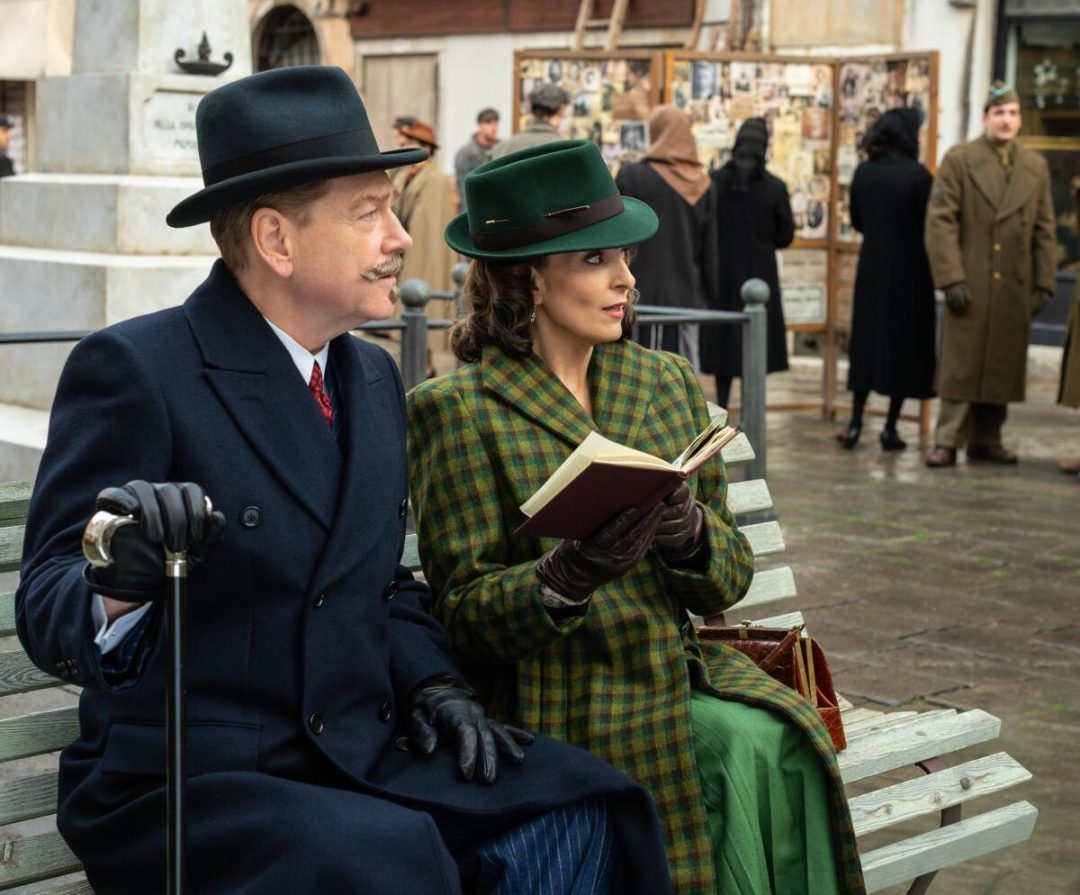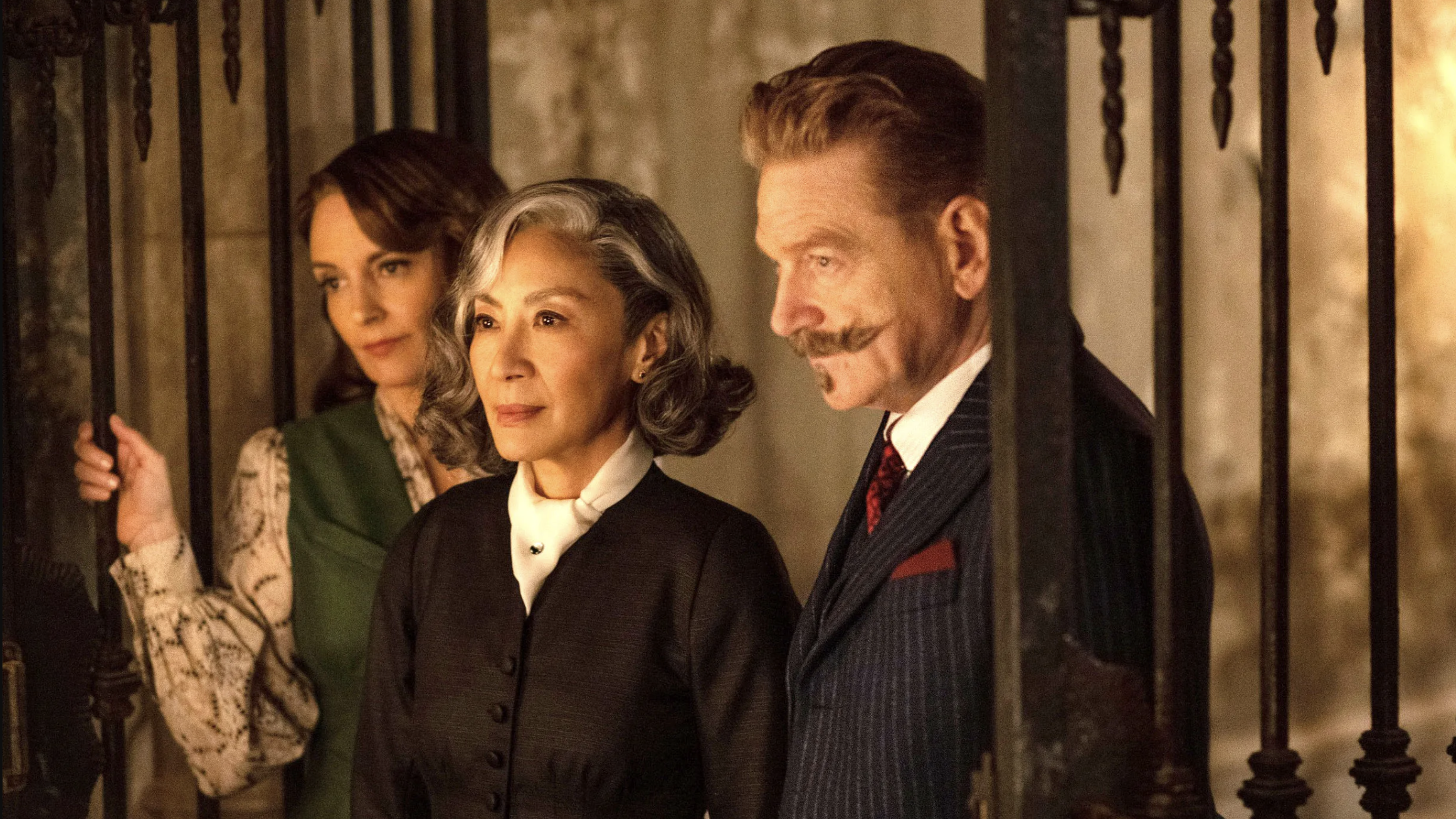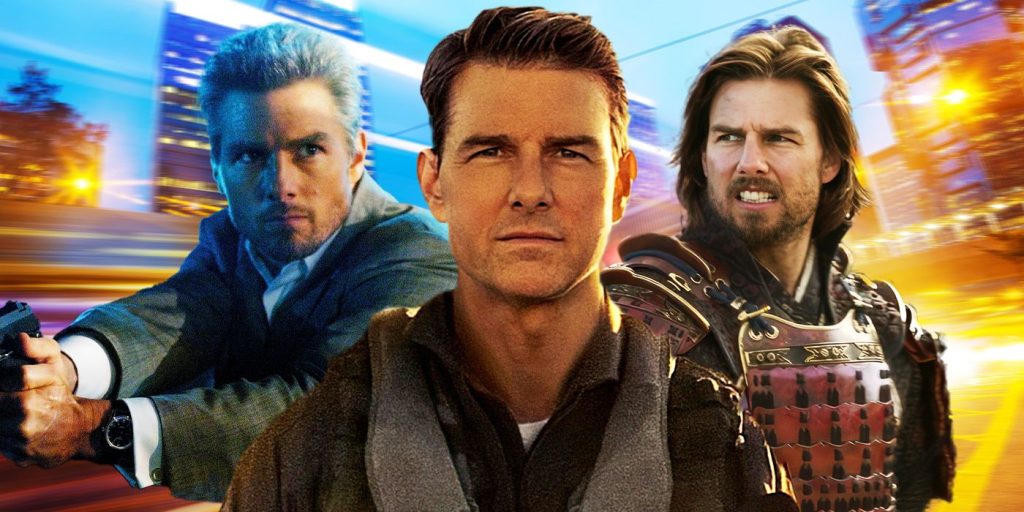Meta Description:
Explore our detailed review of A Haunting in Venice (2023), directed by Kenneth Branagh. Learn about the film’s atmosphere, strong performances, supernatural elements, and how it combines a traditional Poirot mystery with a spooky gothic twist.

Kenneth Branagh’s A Haunting in Venice (2023) marks the third installment in his series of Hercule Poirot adaptations. This time, Poirot is pulled from retirement to investigate a murder during a Halloween séance gone wrong, set against the eerie backdrop of post-World War II Venice. The film blends supernatural horror with the classic whodunit mystery, offering an atmospheric and spine-chilling experience for viewers.
With Branagh returning as the iconic Belgian detective, the film also features a strong supporting cast, including Tina Fey, Michelle Yeoh, and Jamie Dornan. While A Haunting in Venice has its flaws, such as pacing issues and an occasionally jarring mix of horror and mystery, it succeeds in delivering a satisfying and spooky mystery that will captivate fans of Agatha Christie and gothic thrillers.
Kenneth Branagh’s Direction and Performance as Poirot
Branagh’s direction in A Haunting in Venice takes a more restrained approach compared to his earlier Poirot films. While previous adaptations, such as Murder on the Orient Express and Death on the Nile, leaned heavily on grand spectacles, this film feels more intimate and focused. Branagh’s decision to scale back the action and concentrate on a more straightforward mystery allows the eerie atmosphere to shine through.
Branagh’s Less Ambitious but Enjoyable Approach
In this adaptation, Branagh opts for a more manageable narrative, simplifying the story and introducing fewer twists and characters than in his previous Poirot films. This results in a film that is easier to follow and offers a more direct experience. Branagh’s ability to create suspense with fewer plot elements is commendable, as it allows for a more concentrated, satisfying mystery.

Branagh’s Poirot: A More Vulnerable Character
Poirot’s portrayal in A Haunting in Venice also reveals a more vulnerable side to the detective. Branagh’s Poirot is not the confident, unshakable figure seen in previous films, but rather a man haunted by his past and hesitant to return to his old life. This adds a layer of emotional depth to the character, making him more relatable and human, which is a refreshing take on the iconic detective. Branagh’s ability to balance Poirot’s intellect with his emotional complexity is one of the film’s strongest elements.
The Performances: Strong Supporting Cast
While Branagh’s Poirot takes center stage, the supporting cast of A Haunting in Venice plays a crucial role in bringing the film’s spooky mystery to life. With standout performances from Tina Fey, Michelle Yeoh, and Jamie Dornan, the film’s ensemble cast adds humor, suspense, and emotional depth.
Tina Fey as Ariadne Oliver
Tina Fey plays Ariadne Oliver, a mystery writer who teams up with Poirot to solve the case. Fey’s performance brings much-needed levity to the film, as her witty and sometimes quirky character adds humor to the otherwise tense atmosphere. Her interactions with Poirot provide a balance of sharp banter and emotional resonance, making her a strong addition to the cast. Fey’s comedic timing works well within the context of the gothic thriller, providing moments of lightness amidst the film’s eerie mood.
Michelle Yeoh as the Psychic Medium
Michelle Yeoh delivers a compelling performance as a psychic medium whose involvement in the séance plays a crucial role in the investigation. Her portrayal of a mysterious and slightly otherworldly character adds depth to the supernatural aspect of the film. Yeoh’s strong screen presence elevates the film’s tension, as her character’s insights into the paranormal world make the case even more complex and intriguing.
Jamie Dornan’s War-Traumatized Father
Jamie Dornan plays a father suffering from the trauma of war, and his portrayal adds emotional weight to the film. His character’s struggle with grief and guilt makes for a poignant subplot that enhances the mystery’s emotional core. Dornan’s performance is nuanced, portraying a man torn between his past and the present danger he faces. His role adds an important layer to the story, allowing for deeper exploration of the film’s themes of trauma, loss, and redemption.
The Supernatural Elements: Blending Horror and Mystery
A Haunting in Venice combines classic detective mystery elements with supernatural horror, making it a unique entry in the Poirot series. The film’s atmosphere is steeped in eerie, gothic vibes, with jump scares and unsettling moments that add a layer of horror to the mystery. However, the balance between the supernatural elements and the detective work can be somewhat jarring for some viewers.
Jump Scares and Eerie Atmosphere
The film’s supernatural elements come to life through a series of jump scares and eerie visual cues, adding to the suspense. The haunted mansion setting, with its creaking doors, dimly lit corridors, and ghostly whispers, creates a palpable sense of unease. These elements are effective in setting the mood for a spooky mystery, drawing the audience into the world of the film. The eerie atmosphere makes the investigation feel more tense and unpredictable, heightening the stakes for Poirot and the other characters.
The Jarring Mix of Mystery and Supernatural
While the supernatural horror elements add suspense, they sometimes feel out of place in a classic Poirot mystery. The film oscillates between detective work and supernatural occurrences, making it difficult to fully immerse in either aspect. Some critics have noted that the film’s focus on the paranormal detracts from the cerebral nature of Poirot’s detective work, which is typically more grounded in logic and deduction. This mix of genres may leave some viewers feeling disconnected from the story.
Stay tuned for the second half of this review, where we’ll discuss the film’s cinematography, production design, and its overall reception.
For more insights into A Haunting in Venice and other Poirot adaptations, check out our Best Poirot Movies and Gothic Mysteries in Cinema.
Cinematography and Production Design
One of the standout features of A Haunting in Venice is its atmospheric cinematography and production design, which effectively convey the gothic and eerie mood of the story. The film’s visual style is integral to building the suspense and unease that permeates the narrative. From Venice’s misty canals to the creaking, dimly lit interiors of the mansion, the cinematography creates an immersive world that is both beautiful and unsettling.
Venice’s Dark, Watery Essence
The setting of Venice plays a crucial role in the film, with the city’s labyrinthine streets, shadowy corners, and fog-covered canals contributing to the overall eerie atmosphere. The cinematography captures Venice in a haunting light, emphasizing the city’s dark, mysterious beauty. This sense of place is critical in making the film feel like a gothic thriller, where every corner could hide a secret or a danger.
The use of lighting and camera angles further enhances this sense of unease. Dimly lit scenes and tight shots within the mansion create a feeling of claustrophobia, while expansive exterior shots of Venice add to the tension, making the viewer feel both enclosed and isolated at the same time.

Production Design that Evokes Post-War 1946
The production design in A Haunting in Venice is another key factor in establishing the film’s post-World War II setting. The film’s sets, costumes, and props effectively reflect the 1946 time period, with muted color palettes and period-appropriate details. The design of the mansion, where most of the action takes place, is dark, foreboding, and full of intricate details that evoke a sense of history and mystery.
The furniture, decor, and even the choice of lighting all contribute to a feeling of loss and trauma from the war. This careful attention to period accuracy helps to ground the supernatural aspects of the film in a real historical context, enhancing the tension between the rational detective work and the eerie, unexplained occurrences.
Criticisms: The Story’s Pacing and Character Motivation
Despite its many strengths, A Haunting in Venice is not without its flaws. The film’s pacing, character motivations, and occasionally underdeveloped screenplay have drawn some criticism. While the film’s atmosphere and performances are strong, the narrative can sometimes feel overly complex or jarring, particularly when trying to balance the supernatural elements with Poirot’s traditional detective methods.
The Underdeveloped Screenplay
One of the key criticisms of the film is its screenplay, which some feel is underdeveloped. While the premise is intriguing, the film sometimes lacks the depth needed to make the mystery feel truly engaging. Some characters, particularly in the supporting cast, are not given enough backstory or development, making it difficult for the audience to fully invest in their motivations or actions.
This lack of character development becomes particularly apparent in the third act, where some character motivations feel forced or unclear. This undermines the emotional payoff of the mystery, as viewers are left to make assumptions about characters’ decisions and actions rather than being guided through a logical progression.
Murky Visuals and Confusion
While the cinematography is generally effective in setting the film’s tone, some critics have noted that the murky visuals can occasionally lead to confusion. The dark lighting and frequent use of shadows, while contributing to the film’s gothic atmosphere, sometimes make it hard to fully see or understand what’s happening on screen. This can detract from the tension, as key moments of the plot or clues within the investigation become obscured by the dimly lit scenes.
The decision to rely heavily on atmosphere can sometimes blur the clarity of the story, leaving some viewers feeling disconnected from the action. While the eerie ambiance is essential to the film’s vibe, the visuals sometimes become a hindrance to the audience’s understanding of the narrative.
Overall Impressions: A Satisfying, Spooky Mystery
Despite some narrative and pacing issues, A Haunting in Venice is an enjoyable and atmospheric mystery film. Kenneth Branagh’s restrained direction, combined with strong performances and an eerie setting, make the film a satisfying watch for fans of supernatural thrillers and classic detective stories. While it may not surpass the heights of his previous Poirot films, it still offers an engaging and spooky experience.
A Satisfying Mystery with Gothic Twists
For those seeking a supernatural twist to their detective mysteries, A Haunting in Venice delivers. The film blends gothic horror with the cerebral detective work that Poirot is known for, offering a refreshing take on the genre. The mix of mystery and supernatural elements keeps the audience on edge, even if the balance between the two can sometimes feel uneven.
The mystery itself is satisfying, with plenty of twists and red herrings to keep viewers guessing. While the supernatural elements may not appeal to everyone, they add a layer of intrigue and tension that helps differentiate this film from other Poirot adaptations.
Recommended for Fans of Christie and Supernatural Mysteries
A Haunting in Venice is particularly recommended for fans of Agatha Christie’s work, as it stays true to the essence of the detective genre while offering a fresh, spooky twist. It’s also an excellent choice for those who enjoy supernatural mysteries with a gothic atmosphere. Although it may not be as sharp or complex as other Poirot adaptations, it provides a fun, eerie experience that delivers the thrills of a good whodunit.



